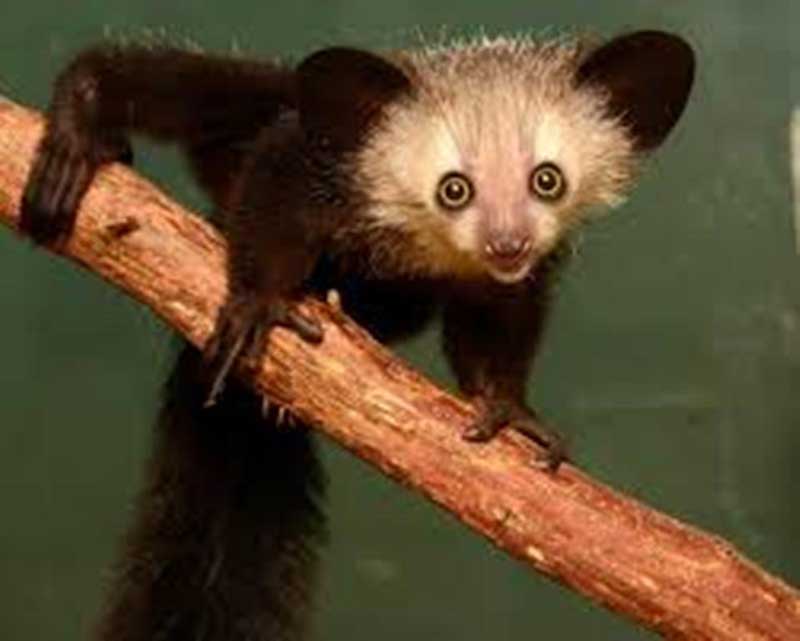
Nocturnal, solitary and arboreal, the Aye-aye is actually a species of lemur and can be found only on the island of Madagascar.
A full-grown Aye-aye is typically about three feet long and weighs around two kgs. Distinguished by a bushy tail that is larger than their body, Aye-ayes have big eyes, slender fingers, large and sensitive ears. Young Aye-ayes are typically silver coloured on their front and have a stripe down to their back. However, with maturity, its body becomes completely covered with thick multicoloured fur. While the ends of the hair, on the head and back become typically tipped with white, the rest of the body usually turns yellow or brown. The Aye-aye is known for the unique structure of its hands, especially for its unusually long third digit. Except for their opposable big toes, they have pointed claws on all their fingers, which enable them to dangle from the branches. They are also equipped with rodent-like sharp teeth that constantly grow. They spend their lives in rain forest trees, avoid coming down to earth and spend the day curled up in a ball-like nest of leaves and branches.

Although the Aye-aye occasionally comes down to the ground, it spends most of its life high in the trees. During the day, they sleep in spherical nests in the forks of tree branches and emerge out in the dark to hunt for food.
The Aye-ayes are omnivorous animals and they commonly eat seeds, fruits, nectar, fungi and insect larvae. By tapping the tree with the long third finger, they locate wood-boring insect larvae, apparently listening for the hollow sound of the channels and once a chamber is found, they chew a hole into the wood and then use the third finger to extract the insects. They also use that finger to dig the pulp out of fruit.

The female Aye-aye is dominant to their male counterparts and they are not typically monogamous. Often they challenge each other for mates. Normally, the male Aye-ayes locked to females during the mating in sessions, which may continue up to an hour.

The Aye-ayes are considered by many native people of Madagascar as an omen to ill luck. Some believe that simply by pointing at them, the Aye-aye can curse a person. Even, many of them believe that during the wee hours, the evil creature stealthily sneaks into human homes and use their lethal finger to pick at the hearts of their victims. As a result of these taboos and superstition, they often kill the poor creature mercilessly at sight. Due to indiscriminate killing and hunting, along with deforestation, the population of the Aye-aye has decreased considerably. However, today they are protected by law.